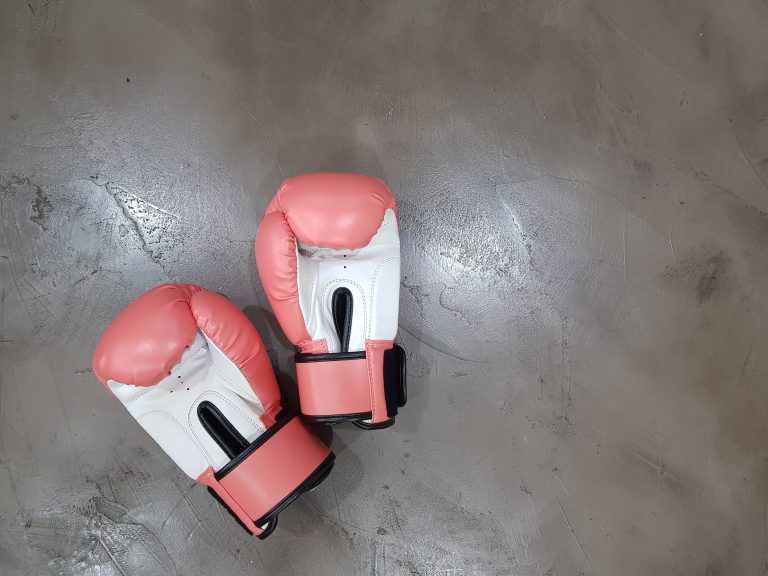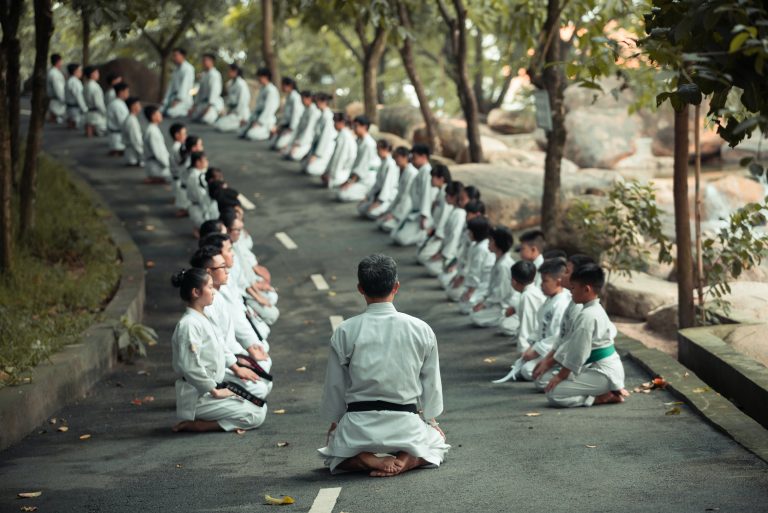Karate Belt Colors and Meanings:
Introduction:
Karate is a popular martial art with millions of practitioners worldwide. Belt ranking is an essential aspect of karate that determines an individual’s skill level, experience, and achievement. Every practitioner strives to advance to higher belt ranks, but you must understand the karate belt colors and their meanings. In this blog post, we will discuss the history, significance, and traditional meanings of different karate belt colors that are recognized by most karate organizations.
History of Karate:
Karate has its origin in Okinawa, a small island in Japan. It was developed in response to the need for self-defense when weapons were banned by the ruling dynasty. After Japan annexed Okinawa, the karate system spread all over Japan and found its way to other parts of the world. Karate practitioners use different colored belts to indicate their levels of proficiency, with the black belt being the most prestigious level.
Karate Belt Colors and their Meanings:
Karate belts‘ colors vary based on the organization, and some may have additional or fewer levels than others. However, the following are the most common karate belt colors and their meanings:
White Belt:
The white belt is the starting point for all karate practitioners and signifies a beginner’s level. It indicates that you have little knowledge and experience of karate and are ready to start learning the basics.
Yellow Belt:
The yellow belt signifies progress and knowledge in the karate system. It indicates that you have developed a basic understanding of the fundamental techniques and are ready to learn more advanced techniques.
Orange Belt:
The orange belt signifies dedication and commitment to the karate system. It indicates that you have developed more proficiency in the fundamental techniques and are ready to learn more complex techniques.
Green Belt:
The green belt signifies growth and renewal in the karate system. It indicates that you have developed an understanding of the basic techniques and have begun to hone your skills in execution.
Blue Belt:
The blue belt signifies depth and breadth in the karate system. It indicates that you have reached a level of proficiency that allows you to develop your own techniques and style.
Purple Belt:
The purple belt signifies refinement and perfection in the karate system. It indicates that you have trained extensively to refine your technique, timing, and distance and are ready to learn higher-level techniques.
Brown Belt:
The brown belt signifies power and control in the karate system. It indicates that you have trained extensively and are ready to learn the advanced techniques that will enable you to execute and control your power.
Black Belt:
The black belt is the most prestigious level and signifies mastery of the karate system. It indicates that you have trained extensively, are highly skilled, and have internalized the essence of the karate system.
Frequently Asked Questions About Karate Belt Colors and Meanings
Karate is an ancient martial art originating from Okinawa, Japan, and is widely practiced around the world. It is the practice of physical and mental discipline, and one of the essential elements of karate is the belt system. The karate belt system is a way to demonstrate the level of proficiency that a student has achieved, and it follows a particular color scheme. In this blog post, we will answer some of the most frequently asked questions about karate belt colors and their meanings.
What are the origins of the karate belt system?
The belt system was introduced by Jigoro Kano, the founder of Judo, in the late 19th century. Kano developed the belt system as a way to differentiate between students‘ skill levels and to mark their progress. Later on, other martial arts such as karate adopted this system.
What are the colors of the karate belt system?
The colors of the karate belt system are as follows:
- White
- Yellow
- Orange
- Green
- Blue
- Purple
- Brown
- Red
- Black
What do the different colors of the karate belt system represent?
The colors of the karate belts signify both the student’s rank and the level of skill they have achieved. Each color has a different meaning, and they signify various stages of learning in karate. Here is a breakdown of what each color represents:
- White Belt: A white belt symbolizes a beginner or novice student who is just beginning their journey in karate.
- Yellow Belt: A yellow belt represents a transition from white, and the student has learned some basic techniques.
- Orange Belt: An orange belt signifies that the student has progressed beyond the beginner level and has developed a basic understanding of karate principles.
- Green Belt: A green belt indicates that the student has mastered the basics and is ready to learn more advanced techniques.
- Blue Belt: A blue belt represents that the student has developed more advanced techniques.
- Purple Belt: A purple belt represents that the student has learned more complex techniques and has developed a deeper understanding of karate principles and the philosophy behind them.
- Brown Belt: A brown belt signifies that the student has almost reached mastery of the art and has made significant progress in their training.
- Red Belt: A red belt represents that the student is approaching mastery and has exceptional skill in karate.
- Black Belt: A black belt represents mastery of the art and is the highest rank.
How long does it take to earn each belt color in karate?
The time it takes to earn each belt color in karate varies depending on several factors, including the student’s dedication, effort, and the specific martial arts school or instructor. On average, it may take up to three months to advance from one belt to another, but it may also take years to reach higher levels, such as black belt or beyond.
Can a student skip belt colors in karate?
It is uncommon for a student to skip belt colors in karate. However, some schools and instructors may allow students to test for a higher belt color if they demonstrate exceptional skill and understanding. Skipping belt colors is usually at the discretion of the instructor, and it is not typical.
Is the karate belt system the same in all martial arts?
No, the karate belt system is specific to karate, and other martial arts may have different color schemes or ranking systems altogether.
In conclusion
The karate belt system is an essential part of the martial art and symbolizes a student’s progress and level of proficiency. Each color represents a different stage of learning, and it is a significant achievement to earn a higher level belt. With dedication, effort, and guidance from their instructor, students can progress through the ranks and eventually attain mastery of the art of karate.
Karate Belt Colors and Meanings: A Comprehensive Guide to the Hierarchy of Martial Arts Degrees
Karate originated in Okinawa, Japan in the early 20th century and has since spread across the globe, originating myriad traditions and systems. One such tradition is the system of colored belts that signify a practitioner’s level of expertise. In this article, we will outline the various karate belt colors and meanings, starting with the most basic level and progressing to the highest.
What is a karate belt?
Before delving into the specifics of each karate belt level, it is important to understand what the belt itself represents. A karate belt is a symbol of a practitioner’s level of skill and knowledge. It is a piece of colored cloth worn around the waist that signifies one’s progress and development in the martial art of karate.
White Belt (Mukyu)
The white belt is the first belt attained in karate, and as such, it signifies the beginning of the karate journey. The white belt represents purity, innocence, and a lack of knowledge. The beginner student wears a white belt, indicating their readiness to set aside their preconceptions and learn from their instructor.
Yellow Belt (Kukyu)
The yellow belt signifies a student’s progression from the beginner level. It represents the first step towards building strong foundations in karate techniques. The color yellow is associated with sunlight, and thus, this belt is said to represent the first rays of knowledge that penetrate the student’s mind. The yellow belt is also a symbol of growth, both physical and mental as the student learns the basic techniques and principles of karate.
Orange Belt (Nikyu)
After attaining the yellow belt, the student progresses to the orange belt. This belt signifies a deeper understanding of karate’s principles and techniques. It also indicates the potential for greater strength, speed, and agility. The color orange is associated with dawn, and thus, the orange belt is said to represent the new dawn of the student’s progress in their karate journey.
Green Belt (Sankyu)
The green belt signifies the next level in the student’s progression towards mastery of the art of karate. It represents growth, vitality, and the continuing development of the student’s physical and mental abilities. The color green is associated with growth and renewal, and thus, this belt is said to represent the continued growth of the student’s knowledge and skill level.
Blue Belt (Nikyu)
The blue belt represents the student’s continued progress towards mastery of karate. It is a symbol of focus and determination, as the student becomes more disciplined in their training. The color blue is associated with the sky and thus, the blue belt is said to represent the limitless potential of the student’s progress towards mastery.
Purple Belt (Ikkyu)
The purple belt represents the highest level of knowledge and skill attained before the coveted black belt. It is a symbol of great accomplishment and dedication to the art of karate. The color purple is associated with royalty, and thus, this belt is said to represent the student’s mastery of the art.
Brown Belt (Dan)
The brown belt indicates a student’s readiness to begin the journey towards mastery. It is a symbol of perseverance and endurance, as the student has already achieved a great deal in their training. The color brown is associated with the earth, and thus, this belt is said to represent the deep roots that the student has developed as they prepare for the journey ahead.
Black Belt (Dan)
The black belt is the ultimate symbol of mastery in the art of karate. It represents the culmination of years of training, practice, and dedication. It is also a symbol of humility, as the student now realizes that their journey is far from over. The color black is associated with the darkness before dawn, and thus, this belt is said to represent the student’s potential for continued growth and development.
Conclusion
Karate belt colors and meanings are an important component of the martial arts tradition. Each belt color represents a student’s progression towards mastery, and the attainment of the black belt represents the ultimate goal of every karate practitioner. Understanding the hierarchy of karate belts and the associated meanings can help students stay motivated and focused on their journey towards mastery of the martial arts.
Inhaltsverzeichnis





